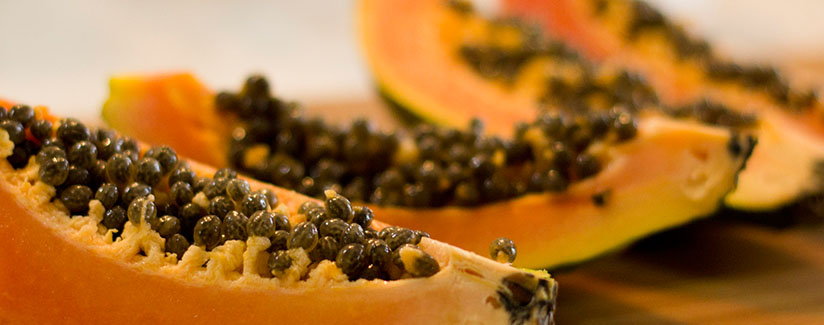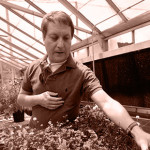
Frequently Asked Questions – GMOs
We’ve read it in magazines, seen it on internet news sites, and maybe even watched a segment discussing it on afternoon television. GMOs, genetically modified organisms, biotechnology, or even ‘frankenfood,’ as some like to call it, have certainly raised a lot of questions.
You’ve shared your concerns and asked questions about GMOs with us, and we’ve gathered experts and resources to answer them. This post continues our series focused on GMOs, to read all related posts in the series, click here. This week, we’re focused on providing expert answers to some frequently asked questions about GMOs.
We’ve heard people ask: “How can GMOs be safe if they aren’t natural?” “Aren’t GMOs forcing all farms to become huge corporations?” “How are GMOs regulated?” “Do GMOs cause increased antibiotic resistance?”
We reached out to the following experts for answers.
- Dr. Bruce Chassy, Professor of Food Microbiology and Nutritional Sciences; Executive Associate Director of the Biotechnology Center; Assistant Dean for Science Communications in the College of Agricultural, Consumer and Environmental Sciences, University of Illinois – Urbana/Champaign
- Dr. Peggy Lemaux, Cooperative Extension Specialist at the University of California – Berkeley
- Dr. Martina Newell-McGloughlin, Director, University of California Systemwide Biotechnology Research and Education Program (UCBREP), Co-Director, National Institutes of Health Training Program in Biomolecular Technology, Co-Director, NSF IGERT CREATE Training Program, and Adjunct Associate Professor, Department of Plant Pathology at the University of California-Davis.
- Dr. Wayne Parrott, Professor in the Department of Crop and Soil Sciences College of Agricultural & Environmental Sciences University of Georgia, University of Georgia
- Dr. Alison Van Eenennaam, Cooperative Extension Specialist, Animal Genomics and Biotechnology, University of California-Davis.
How can GMOs be safe if they aren’t natural?
Dr. Newell-McGloughlin:
Biotech products are far safer than other methods that are used to introduce traits and value into crop products. We have been modifying crops for about 10,000 years. And a lot of the older technology is not subject to regulatory review because it is “generally regarded as safe”, or GRAS. An example of this is RoundUp Ready soybeans (ones that can tolerate pesticides and herbicides). Before being made available to the public, they were subject to 1,800 tests. Some examples of foods in the modern diet that are also considered GRAS include:
- Wheat used for pasta – the technology came from a nuclear research facility after World War II.
- Asian pears – they’ve been irradiated at a facility in Japan
- Barley, used for Irish beer and Scotch whiskey – comes from corn that was irradiated at a nuclear research facility
- Asparagus – all asparagus consumed today is the product of biotechnology
Dr. Parrott:
It’s not a good idea to assume natural automatically means safe. Salmonella, aflatoxins, botulism, poison ivy, strychnine, arsenic, asbestos and lead are all natural substances that are not safe for humans. Although humans have been modifying their food for centuries, the point is that many extra precautions are used when food is modified by biotechnology. These include an extensive series of laboratory and animal safety studies. In contrast, food produced with other technologies is simply assumed to be safe, and no extra testing is usually required.
Don’t GMOs only benefit the large companies that develop them?
Dr. Newell-McGloughlin:
No. One of the real advantages of biotech products is that they are scale-neutral. A Kenyan scientist says that biotech crops are packaged technology. You don’t have to teach farmers new techniques, you just need to give them seed and the technology allows them to increase yields and reduce their need for chemicals. Of the 148 million hectares of biotech crops worldwide, there are now 29 countries (19 of those are less-developed countries) using biotech crops. Ninety percent of the farmers growing biotech crops are growing on 10 hectares or less – so the reality is that many smaller farmers are using the technology than larger farmers.
Dr. Parrott:
It is said that GMO technology is the most rapidly adopted technology in the history of agriculture. Such rapid and widespread adoption by farmers would have been impossible if the farmers were not the ones benefiting. These crops have been a tremendous benefit for farmers of all sizes: it has lowered their costs; it’s increased their income by preventing yield losses; and it makes their lives much easier because these crops are much easier to manage. So any time there’s been a crop that has not provided these benefits to farmers, they simply refuse to buy it. And, if anything, smaller farmers have benefited disproportionately. Last year, over 15 million farmers planted GM crops around the world; of these, 14 million were small farmers.
Nevertheless, one might wonder why it is that only large companies offer GMO products. The fact is that GMO technology is extremely safe. It’s probably one of the safest technologies known to mankind, so it shouldn’t need to be as highly regulated as it is today. But instead, GM is one of the most regulated technologies in history. And if you regulate something that’s safe technology, all you’re doing is you’re driving out the public sector; you’re driving out the smaller companies, and really, the only ones who can afford it are the really large corporations. So to the extent that we have seen this technology become the purview of the large corporations, it is because the excessive regulations that are in place ensure only large companies can afford it.
Don’t GMOs force smaller farmers to be controlled by the large corporations that develop the technology?
Dr. Parrott:
Few farmers today are truly independent. They depend on companies for everything from pesticides to tractors to fertilizers to cell phones. Farmers became dependent on buying hybrid seed in the 1930s. Today, GMO technology empowers the farmer to choose which technologies are the most flexible and profitable for his/her location—for example, a farmer can forsake buying insecticides and choose GM seed instead.
From my perspective, every farmer, as an astute businessperson, has the right to buy the seeds that are right for the land they farm. This decision-making process – where they aren’t forced to buy any particular seed, or choose any particular agricultural method – is one that allows them to stay in business year after year.
How are GMOs regulated?
Dr. Newell-McGloughlin:
In the U.S., GMOs are more highly regulated than any other methods to introduce traits into crops today. Three principle agencies that regulate are:
- Food and Drug Administration (FDA)
- USDA Animal and Plant Health Inspection Service (USDA-APHIS)
- Environmental Protection Agency (EPA)
The primary body that regulates the commercialization of GMOs is APHIS. This is a lengthy and expensive process. For most regulation, it takes several years to determine the status. This process has actually inhibited development of many crops that could replace older, less safe, less environmentally friendly techniques.
Dr. Lemaux:
The FDA is responsible for the safety and labeling of foods and animal feeds from all crops, including those that are genetically modified. The EPA evaluates food safety and environmental issues associated with new pesticides. The EPA also oversees GMO plants, for example in cases where a small part of a pest is used to develop the GMO crop. And USDA-APHIS oversees environmental consequences and safety of planting and field-testing of GMO plants. Their role is to ensure that field tests of GMO crops are conducted under specified conditions and that any unusual occurrences are reported.
Every GMO crop will not be overseen by all three agencies; however, all three agencies have the legal power to ask for immediate removal from the market of any product, if valid scientific data show a safety concern for consumers or the environment.
Dr. Van Eenennaam:
The FDA is responsible for the regulatory oversight of genetically engineered animals. For all human and animal drug applications, the FDA requires that the company interested in selling a product provide them with the food and safety data to support their contention that the product is safe. They consult with the company as to the types of studies that will be required to show that it’s safe. The company then carries out those studies, and the FDA independently reviews the data and comes to a conclusion as to whether or not the product is safe. Some people think the FDA should not use company data to prove safety, but requiring the FDA to produce that data would shift the cost of drug development from the private to the public sector.
Do GMOs cause increased antibiotic resistance?
Dr. Newell-McGloughlin:
No. Most of the new methods do not use antibiotics in any form. Some older techniques did use antibiotic-resistant genes, but not antibiotics. Antibiotics have never been in biotech crops. Every day – especially if you walk through a hospital – you have a much greater probability of picking up antibiotic-resistant genes than you ever would have interacting with a biotech crop plant. So the probability of these resistant genes transferring, for example, from eating corn, and transferring to your body is pretty much zero. You have about 10,000 times greater probability of picking up these types of genes merely from walking through a hospital.
Dr. Parrott:
This concern comes from the fact that in the early days of GMO, genes for antibiotic resistance were used in the modification process. However, these were not genes for resistance to antibiotics that are used to treat human illness; rather they were resistance genes that are common in the environment—every vegetable, speck of soil etc., has bacteria with these resistance genes in them. They are very common in the human gut as well. As a matter of fact, if every bacteria that was resistant to the antibiotics used in genetic engineering was the size of a garden pea, then the average human has enough antibiotic-resistant bacteria in his or her gut to fill the Superdome. Both the FDA and its equivalent agency in Europe have studied the issue and concluded there was no safety issue. Because these particular resistance genes are so common, any genes released by a GM crop into the environment would have the same effect as taking sand to the beach.
Dr. Chassy:
No, not at all. Setting aside the fact that antibiotic resistance markers are not commonly used these days because other techniques have replaced them, there never was much reason for concern. The chances of such genes transferring from plants to bacteria is less than one in a trillion. If it happened, you would have one antibiotic-resistant microbe in a world full of antibiotic-resistant microbes. There are billions of antibiotic resistant microbes in the waste each of us flushes down the sewer each day, they are in the soil we walk on, they are literally all around us. It’s a fact that 10% of the microbes in soil already have the antibiotic resistance gene that was formerly used in biotechnology. What makes resistance genes a problem is the misuse and poor stewardship of antibiotics, often by patients who have been given antibiotic prescriptions, and sometimes because they are prescribed when not really needed – a practice doctors are watching very closely now that they know it contributes to the spread of resistance.
Are GMOs considered sustainable?
Dr. Van Eenennaam:
To me, sustainability is a three-legged stool that needs to balance economics, environmental and social goals. There are some GM applications that have the potential to satisfy all three of these sustainability goals concurrently. For example, GM animals that are disease-resistant are less expensive to raise, have improved animal welfare, and have decrease need for the use of therapeutic antibiotics. Improving production efficiency through improved animal health would also have the added environmental benefit of decreasing the carbon footprint per pound of product that is produced.
Dr. Parrott:
The 3 pillars of sustainability are people, profit and planet. From that perspective, they meet the profit criterion, or farmers would not be using them to the extent they are. They meet the planet criterion, as GMOs are lowering the agricultural footprint- there is less chemical damage, less erosion, less greenhouse gasses and less fossil fuel use. Finally, they improve the quality of life for people. My grandfather was a farmer, and he would much rather have spent his Sunday afternoons watching football with the grandkids; instead, he had to spend it on the tractor plowing and spraying. The fact that GMO agriculture requires a lot less labor has also contributed to its popularity among farmers.
What role does GM food have in the increase of food allergies and ADD in children?
Dr. Parrott:
There is data from Europe which shows that allergies were on the rise well before the era of GMOs. Furthermore, GMO crops are extensively tested before marketing with a special emphasis to make sure they do not cause allergies. At this point, I cannot think of anything that is uniquely different or uniquely present in GM crops that could be associated with any negative effects on people.
Dr. Chassy:
None. There is simply no connection between GM crops and the small increase in food allergy that may or may not be occurring – allergists are still arguing among themselves if it is more allergies or more frequent diagnosis. Those who think allergies are increasing have a theory, also unproven, that raising our children in very sanity conditions may be a factor in allergies. The theory goes that since the food allergy immune response is mediated by the parasite immune system, and we don’t need that system very much because of improvements in sanitation; the idle system sometimes reacts to foods that it normally wouldn’t react to. But that’s just one idea, allergists really don’t know the reason, but no responsible allergist implicates GM crops. Note that reports of allergies increasing started coming in long before the first GM crops were planted. And GM crops are the only types of crops that are actually carefully studied to make sure they don’t cause allergies before they are put on the market, so they are less likely to cause allergies than most foods. The fact is, 90+ percent of food allergies are caused by a few commonly eaten foods: fish, shellfish, milk, wheat, soy, eggs, peanuts, tree nuts. Of those, only soybeans (soy products) are planted as a GM crop, so it’s hard to see how GM crops would be contributing to allergies. There is no evidence of a connection between GM crops and ADD and no sound scientific reason to think there should be. Rates of ADD are also increasing, but doctors think this is because of growing awareness and higher rates of diagnosis.
What is the difference between GMOs and Hybridization?
Dr. Parrott:
Hybrids have been around for centuries– a mule is simply a hybrid between a male donkey and a female horse, which has the best characteristics of both. Hybrid seed – made by crossing different parents together – came into use around the 1930’s. The down side to mules is that they are sterile. Plants from hybrid seeds are not sterile, but seeds obtained from plants obtained from hybrid seeds are not overly productive. Nevertheless, since plants from hybrid seed are much higher yielding and much more uniform than plants from other seed, they are popular with farmers and profitable enough to warrant buying new seed each year.
A GMO is made by transferring a new gene into a crop or other species. As such, genes can be just as easily transferred into both conventional and hybrid plants.
Dr. Chassy:
Hybridization is a cross between two species to produce a new hybrid organism. The offspring from such a cross has 50% DNA from each parent and that DNA is said to recombine to make a new set of chromosomes by a process called recombination. The new hybrid organism has genes from two different species all mixed up. Contrary to popular belief such crosses can be fertile and new species can be made this way – particularly with plants.
GMOs, however, are made by inserting a single gene or perhaps 2-3 genes from one or more organisms into a single organism. The resulting organism is not a new species. In fact, 99.9+ percent of the genes come from the one parent into which a few genes were inserted. It remains the same organism you started with but acquires new traits encoded by the genes you insert. The genes insert by the same systems that cause natural recombination and DNA repair processes in living cells. That’s right, making a GMO is actually a very natural process that uses genes from living organisms and natural enzymes that occur in cells to insert the DNA.
A GMO is not a hybrid, it has only a one or two new genes and one or two new traits. Making a GMO is a much more precise and better controlled process than making a hybrid. That’s why scientists like using these precise methods; they make far fewer random changes to the organisms than methods like hybridization. By the way, splicing pieces of DNA together in a laboratory using enzymes is called recombinant DNA technology because it resembles in principle the recombination of DNA that occurs in hybridization.
How much do you know about GM food? See what other Best Food Facts readers thought!

Pie chart based on consumer poll with 62 respondents.
“Papaya” by Japanexperterna.se is licensed under CC BY SA 2.0.






























